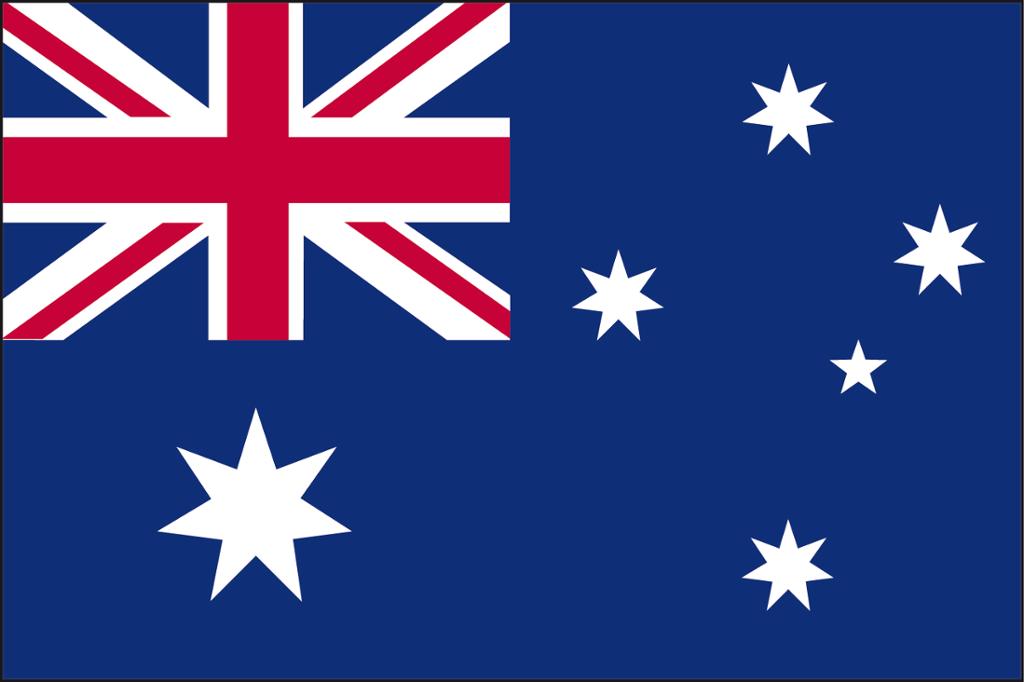
Historical background
The first European settlers and convicts arrived in Australia in 1788. This sparked the development of the Australian accent, which has since then been altered and adapted into what we today know as Australian English. Convicts that were sent to Australia came from all over the British Isles, and they spoke a variety of English accents and dialects.
With so many different dialects interacting, a process known as dialect levelling occurred. Levelling means that different dialects merge and assimilate until the most distinctive characteristics are removed. This is exactly what happened in Australia: major differences in the way settlers and convicts spoke gradually disappeared, and the speech sounds that were most common among them became characteristic of their accent.
In Australia this process went fast: only 50 years after the colony was established, accounts by English people arriving in Australia would claim that Australians spoke “a better language, purer, more harmonious than is generally the case in most parts of England”. Unlike some of the strong accents and dialects used in England at the time, the Australian accent was clearer and easier to understand because it was developed by people trying to understand each other. The extreme dialect variations had been taken out, and a new accent had emerged.
Dialects and accents
Today, more than 200 years after the first convicts set foot on Australian soil, Australian English is a fairly homogeneous language compared to what we find in the United Kingdom and the United States. There are no dramatic dialectal differences across the country. Despite a significant distance between the east and the west coast, you will only find subtle variations in pronunciation in various parts of the country. But that does not mean that everyone speaks the same.
Instead of dividing the language into geographical dialects, most linguists talk about three main variants of Australian English that can be found in the entire country: Broad, General and Cultivated Australian English. These main variants are part of a continuum, where Broad would be farthest removed from a standard British accent and Cultivated would be closest. The variants often, but not always, reflect the social class and/or educational background of the speaker. There is also an urban/rural divide, with more people in the countryside speaking with a Broad accent.
The Broad accent is recognisable and familiar to English speakers around the world. This accent is associated with a strong nasal voice and with a distinct pronunciation of vowels and diphthongs. Australians call this accent 'Strine', and a speaker of the dialect may be referred to as an 'Ocker'. On the other end of the spectrum, we find the Cultivated accent, which has an element of prestige and is associated with British Received Pronunciation (also called 'the Queen's English' or 'Oxford English'). The General accent is a middle accent. It is more neutral and is often regarded as a mixture of the Broad and the Cultivated accents, using elements from both.
Over the past 50 years, Australian English speakers have gradually moved towards the centre of this broadness continuum, and the majority of Australians today opt for the General accent.
A few distinguishing features of Australian English
One of the things that distinguishes Australian English from its original British English is the pronunciation of vowels and diphthongs, which to a large degree is what gives the Australian English its distinct flavour. Australian vowels are much more pronounced and elongated than in any other English accent, and the broader the accent, the longer the vowels.
Australia has also developed a large lexicon of its own. For example, they have given the world new terms for fauna taken from the languages of the indigenous Aboriginal Australians, such as koala, kangaroo, dingo, and wombat. There are also words that you will not find anywhere else in the English speaking world, like 'battler' (a person who refuses to admit defeat in the face of difficulty), 'cobber' (a friend), and 'bludger' (a lazy person).
Perhaps the most unique feature of Australian English is its extensive use of diminutives, which is a shortened version of a word. All languages use diminutives, but Australians are especially fond of theirs. There are more than 5000 known diminutives that are used regularly in Australian English, which is far more than in British or American English. They may be seen as slang, but many forms are used widely across the whole of society, regardless of the speaker's age, social status, or educational level.
Below you will see some common Australian diminutives. Are you able to guess what these words mean?
chalkie
sparkie
to lie doggo
arvo
pollie
tellie
lippie
Straya
uni
selfie
Key
teacher
electrician
to keep a low profile
afternoon
politician
television
lipstick
Australia
university
well... selfie, of course.
So, before you go to Straya to have a convo with an Aussie, you should probably read up on Australian diminutives. You can start practising together with these two blokes:
Link to How to Speak Australian: Abbreviate Everything
Sources
Eriksson, M. (2018). How Australian English Grew Its Wings. Retrieved from: https://www.babbel.com/en/magazine/history-of-australian-english/
Nagel, D. Australian English: Here's Why It's The Best Variety In The World. Retrieved from: https://www.mezzoguild.com/aussie-australian-english-the-best-english/
Oxford English Dictionary. Australian English in the twentieth century. Retrieved from: https://public.oed.com/blog/australian-english-in-the-twentieth-century/
Wilson, G. (2015). The story behind 'Australian English': why we talk the way we do. Retrieved from: https://www.abc.net.au/news/2015-03-16/the-story-behind-australian-english/6315078